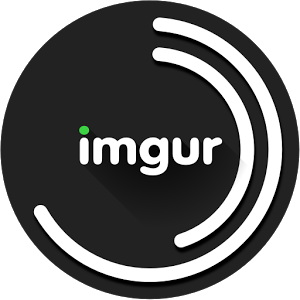| ANNOUNCING THE WINNERS OF THE 11th ANNUAL PACE PITCH CONTEST | ||
|
||
The Eleventh Annual Pace Pitch Contest
Presented by
The Entrepreneurship Lab

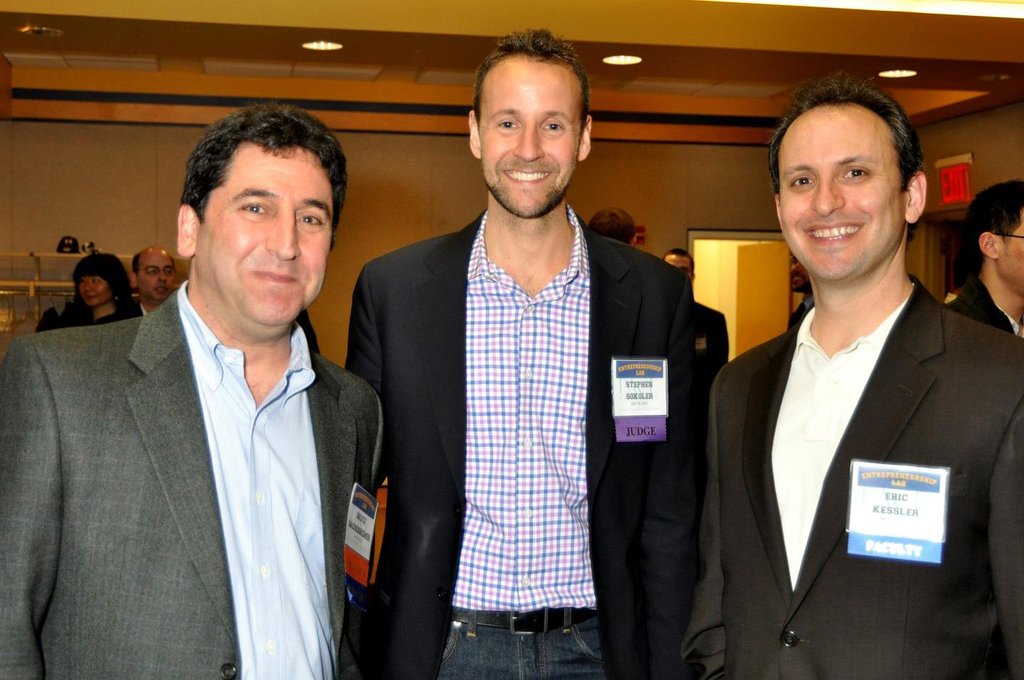

Date: Thursday, April 16th 2015
Time: 5.30 p.m. to 8.30 p.m.
Venue: Bianco Room, One Pace Plaza,
New York NY 10038
- 5:30 - 6:00 Registration and Networking
- 6:00 - 6:15 Welcome
- 6:15 - 7:15 Finalists make their Pitch
- 7:15 - 7:30 Break (Judging Panel selects the winning pitches in private)
- 7:30 - 8:30 Awards Ceremony and Networking
About the Contest
The Pace Pitch Contest is based on the Elevator Pitch concept, popular in the venture capital community. It is an extremely concise presentation of an entrepreneur's idea, business model, marketing strategy, competitive analysis, and financial plan, which is delivered to potential investors. The premise is that it could be made in a few minutes, should the entrepreneur spot a potential investor on an elevator and have the opportunity to pitch their idea during the brief ride.
Each Finalist will have exactly three minutes to pitch their new venture idea to a distinguished panel of judges and an enthusiastic audience. In addition to broad participation at Pace, we have been pleased to welcome student competitors from a number of other universities, including Columbia, Harvard, MIT, NYU, Princeton, and Stanford.
Each individual/team will have 3 minutes to make a pitch and may use up to 5 PowerPoint® slides. The pitch must be an original concept, created by the presenter(s).
Here's How to Enter
1. At least one member of your team should meet one of the following two criteria:
- Full or part-time student currently enrolled in Pace University
- Recent Pace University graduate (graduated within the past 18 months)
AND if you have already launched the venture, it must have been in business for less than 2 years and received less than $100,000 in funding.
2.Register online. Each member of the team must complete the Intent to Compete Registration Form at the Eleventh Annual Pace Pitch Contest Web site elab.nyc/pitch.
Deadline - 5:00 p.m. EST on Monday March 23, 2015
3.Submit a biography. Each biography (if competing as a team, each member must submit a biography) MUST be a minimum of 100 words and a maximum of 200 words. Please be sure to indicate your status as a student (college/university and school, degree, major, full or part-time status, and expected year of graduation) or as a recent graduate (college/university and school, degree, major, and date of graduation).*
Deadline -5:00 p.m. EST on Monday March 23, 2015
4. Submit an Executive Summary. You should prepare a ONE PAGE Executive Summary to be used on the Pace Pitch Web site and in the printed program.*
Deadline - 5:00 p.m. EST on Monday March 23, 2015
5.Finalist Announcement. The names of the finalists will be announced on Monday April 6, 2015
6.Submit a photo. If selected as a Finalist or alternate, you must submit a digital photograph (approximately 100 KB - 1 MB in JPEG format) to be used on the Pace Pitch Web site and in the printed program.*
Deadline -5:00 p.m. EST on Friday April 10, 2015
7.Submit a PowerPoint® presentation.If selected as a Finalist or alternate, you may submit up to 5 PowerPoint® slides to be used with your pitch (the 5 slide maximum includes a title slide and none of the slides may include external hyperlinks, embedded video, or transitions that 'effectively create' more than 5 distinct slide images). PowerPoint slides are not required and may not be used if not received by the deadline. Presentations in other formats will not be accepted.*
Deadline -5:00 p.m. EST on Monday April 13, 2015
8. Make Your Pitch! The finalist/alternate contestant must arrive at the One Pace Plaza, Bianco Room (formerly Multipurpose Room), New York, NY. 10038 by 5:00 pm EST on Thursday April 16, 2015
* All documents must be sent by e-mail to Nikhil Kalyankar, Associate Director, The Entrepreneurship Lab, at nkalyankar@pace.edu
Here's How the Pace Pitch Contest Works:
On Thursday, April 16, 2015, finalists will make their pitches to a panel of judges in front of an enthusiastic audience. There is a strict time limit of three minutes for all pitches. Contestants will present in alphabetical order. After each pitch, the judges may ask a number of questions. All answers must be kept to less than one minute. Immediately after the pitches have been made, the judging panel will decide on one winner from each category based on the Guidelines and Judging Criteria. The Pace Pitch Contest has proven to be an exciting, educational, and fun event. We hope you will enjoy the event and find it valuable.
If you have any questions, please feel free to contact Professor Bruce Bachenheimer, Executive Director, Entrepreneurship Lab, at bbachenheimer@pace.edu or Nikhil Kalyankar, Associate Director, The Entrepreneurship Lab at nkalyankar@pace.edu
Good luck!
The deadline to enter the Pace Pitch Contest is 5:00 p.m. on Monday, March 23, 2015
New Business Concepts Pitch Guidelines | Social Ventures Pitch Guidelines | Ten Questions That You Should Try To Answer
New Business Concepts will be evaluated on the following judging criteria.
- 1. Business Description: Details of the venture and what it does.
- How well was the concept explained?
- How reasonable, sustainable, and scalable is the new concept?
- 2. Market Analysis: Characteristics of the market and description of its customers.
- Is there a genuine need for the product or service?
- How well was the target market defined?
- What is the size and growth of the market?
- What is the consumers' willingness to pay for the product/service?
- 3. Product or Service Analysis: The specifics of the product or service.
- Is the description clear?
- Is the product feasible?
- How easily it can be duplicated?
- Is there a presence of potential substitutes for the product?
- 4. Competition: Identify current and potential competitors.
- Have the current and potential competitors, competitive response, and analysis of strengths and weaknesses been adequately defined?
- 5. Marketing Strategy: How sales will be achieved.
- How realistically defined is the marketing plan?
- Does the plan adequately address price, product, place, and promotion?
- Are resources sufficiently allocated for marketing?
- 6. Operations: How the product or service will be produced and delivered.
- What is the likelihood of securing resources required for production?
- Is there an ability to operate competitively and grow?
- 7. Management: An assessment of the entrepreneur(s) and team.
- Does the team exhibit the experience and skills required for operation?
- What is the depth and breadth of the team's capabilities?
- Does the team demonstrate the ability to grow with the organization and attract new talent?
- 8. Finances: An overview of the required resources and economics of the venture.
- How compelling is the business model?
- Have the resources required for the venture been addressed?
- Has the team clearly and adequately presented a breakeven analysis?
- How reasonable are the financial projections?
- Are there prospects for long-term profitability?
- 9. Investment Proposal: The terms and conditions offered to investors.
- Did the entrepreneurial team explain funding?
- Were offerings to investors and anticipated returns clearly explained?
- Did the team calculate a realistic valuation?
- How feasible is the exit strategy?
- 10. Presentation: Overall effectiveness of the actual presentation.
- Did the presenter(s) engage the audience and hold their attention?
- Did the presenter(s) appear to speak with confidence authority?
- Were visual aids (i.e. PowerPoint® slides) clear and valuable?
- Was the pitch exciting and compelling?
- How efficiently did the team allot their time?
Social Ventures will be evaluated on the following judging criteria.
- 1. Assessing the Need: An analysis of the social issue and its affected population.
- Does the proposed venture address a significant and critical social problem?
- 2. Well-defined Target: Characteristics of the market and targeted population.
- Does the proposed venture adequately describe the problem it hopes to address and have defined parameters within which it plans to operate?
- 3. Management: An assessment of the entrepreneur(s) and team.
- Does the entrepreneurial team possess the skills and experience required to translate the plan into action?
- Can they demonstrated the passion, commitment, and perseverance required to overcome inevitable obstacles?
- Is the team comprised of individuals committed to ethical standards?
- 4. Creativity: A demonstration that the proposed solution displays a unique approach.
- Does the proposal approach the social problem in an innovative, exciting, and dynamic way?
- 5. Feasibility: A demonstration that the venture can be successfully implemented.
- Does the initiative aspire towards clear, realistic and achievable goals, while thinking big?
- Can it be implemented effectively?
- 6. Planning: A clear and well-defined strategy to achieve objectives and goals.
- Are there clear and coherent schedules, milestones, objectives, and financial plans?
- 7. Operations: How the product or service will be physically produced and distributed.
- Has adequate attention been given to the way in which the product or service is to be produced and/or delivered?
- Do they have, or can likely secure, the resources required for production?
- Will they be able to operate competitively and grow?
- 8. Sustainability: Long-term prospects for viability and success.
- Does the proposed venture include adequate strategies for fundraising and income generation?
- Does it consider the different dimensions of financial and social sustainability in a conscientious manner?
- 9. Social Impact: The value that the new venture will bring to society.
- How will the implementation of this social venture benefit the community and the multiple stakeholders involved?
- Is there the potential for significant social impact and engagement of the broader community?
- 10. Presentation: Overall effectiveness of the actual presentation.
- Did the presenter(s) engage the audience and hold their attention?
- Did the presenter(s) appear to speak with confidence authority?
- Were visual aids (i.e. PowerPoint® slides) clear and valuable?
- Was the pitch exciting and compelling?
- How efficiently did the team allot their time?
* While there is some debate regarding the precise definition of a social venture, and what exactly differentiates it from a traditional for profit business, the Selection Committee and Judging Panel will use the following criteria:
- PRIMARY MISSION - is the organization's primary purpose to serve its owners (New Business Concept) or society (Social Venture)
- PRIMARY MEASURE OF SUCCESS - does the organization measure its success primarily by profitability (New Business Concept) or positive social change (Social Venture)
Whether pitching a New Business Concept or a Social Venture, try to address the following ten big questions as completely as possible. Remember, you should not simply talk about a general idea (those are "a dime a dozen"), rather, try to present a concise concept with a cleareconomic model, convincing everyone that you can actually make it happen.
- 1. What's the PROBLEM?
- 2. What's your SOLUTION?
- 3. How large is the MARKET?
- 4. Who is the COMPETITION?
- 5. What makes you so SPECIAL?
- 6. What's your ECONOMIC MODEL?
- 7. How exactly will you achieve SALES?
- 8. Have you assembled a qualified TEAM?
- 9. How will you secure required RESOURCES?
- 10. What are you proposing for an INVESTMENT?
Suggested reading: The Art of the Start by Guy Kawasaki (Penguin 2004), especially Chapter 3, "The Art of Pitching"
First Prize
A $1,000 cash prize will be awarded to the winner.
Second Prize
A $500 cash prize will be awarded to the second place.
Third Prize
A $250 cash prize will be awarded to the third place.
Pace University reserves the right to disqualify, at its sole discretion, any individual or team from the competition at any time (before or after the Pitch Contest or the award of any prize) for any reason. Reasons for disqualification may include, but are not limited to, misrepresentations in the application process, plagiarism, infringement of the intellectual property of others, and any failure to comply with the rules of the competition. Disqualified individuals or teams shall forfeit any and all prizes awarded to them.
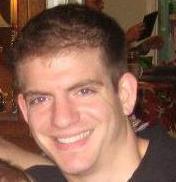
James Quick graduated from Vanderbilt University with a major in Computer Science and Spanish. Upon graduation, he joined Microsoft as the Technical Evangelist in South Florida. He was worked with various Meetup groups, organizations, and schools providing professional development training for Miami Dade High Schools as well as college professions, leading numerous talks and workshops in the community, and speaking at local events such as ITPalooza and South Florida Code Camp. He recently joined the team in New York City and is eager to immerse himself into a new community.
Ian E Scott, Managing Director, Scott Legal Services,P.C.
Ian E. Scott is a Harvard Law School Graduate, lawyer and author of Law School Lowdown: Secrets of Success from the Application Process to Landing Your First Job. (Barron's Publishing) Mr. Scott is also a Certified Public Accountant (C.P.A.) and obtained his M.B.A from the University of Toronto. Prior to law school, Mr. Scott worked at an international investment bank (Credit Suisse) in New York structuring business transactions and providing consultation on deal structures. As an attorney, Mr. Scott worked as a corporate transactional lawyer in the law firm Cleary Gottlieb (a top Wall Street Firm) and is currently the Managing Director of Scott Legal Services, P.C., a law firm specializing in Investor Immigration Visas and New Business set-up. Mr. Scott has been featured and seen in many publications including; Forbes, Bloomberg, The New York Times, Super Lawyers, The Huffington Post, The American Bar Association, Business Insider, The New York Bar Association, Harvard University, Above the Law, Lexis/Nexis, The Student Appeal Journal, Lawyerist, & other Journals. Mr. Scott lives in Manhattan, New York, with his spouse and two lovely daughters.
David Sederholt,
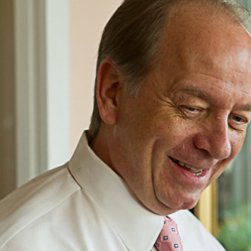 EVP and Chief Operating Officer, Strategic Funding Source, Inc
EVP and Chief Operating Officer, Strategic Funding Source, Inc
David Sederholt received his BS in Biology from Pace in 1973. While working in the field of steroid biochemistry and enzyme kinetics first at the Rockefeller University and later at Sloan Kettering Cancer Center, he was bitten by the entrepreneurship bug. Biomedical research by day and restaurants at night. One restaurant turned into many, with the culmination being an IPO of his casual dining restaurant chain. After selling his interest, he saw a market in servicing the hospitality industry and built a multifaceted firm to provide consulting services, real estate and business brokerage and management recruiting to large national chains and mom and pop entrepreneurs alike. Recognizing that all businesses needed capital to grow, he added small business finance to the list of services. Today, as COO of Strategic Funding Source, Inc., his company has finance over $700MM to over 13,000 businesses throughout the United States and Australia. An entrepreneur financing entrepreneurs.
April Tam Smith, Executive Director, Morgan Stanley
April Tam Smith is an Executive Director of the Equity Derivative sales-trading team at Morgan Stanley. She received her Bachelor's in Engineering from MIT and her MBA at Columbia.
Her 'other life' outside of Wall Street consists of being part of the vibrant community at Redeemer and hoping to live life in a generous and adventurous way. Over the past few years, she has served at orphanages in South Africa and Haiti, and these experiences have planted a deep seed in her to be a voice for the poor and fight for justice while leveraging the resources found on Wall Street to make a difference. One way to do so is her recent venture of Lantern Restaurant in Midtown, a social enterprise that will be using all of its net profit to fund justice work they do through nonprofit Lantern of Hope Foundation. LHF will be partnering with organizations like Yunus Social Businesses and their first project is to complete funding for Les Compotes Haiti, food transformation Social Business, working with local farmers to produce affordable, nutritious baby food for Haitian mothers.
Codapillar
Executive Summary
Codapillar is an application that teaches web programming in a creative, social, and intuitive way. It is a web application and curriculum that break down the learning curve associated with coding and provide a social incentive to keep learners engaged in coding. Creativity and problem solving are the two most critical parts of coding, and are often overlooked in technology education. People should feel free to build what they like without being intimidated by the unfamiliar language of code.
The first time I used HTML was on a MySpace layout. The perfect layout had a picture of the Jonas Brothers embedded into it, and I wanted to change it. I perused the code, not knowing a bit of it, found all of the files that could be images, clicked through each one, found the Jonas Brothers picture and replaced it with a picture of Pink Floyd.
Looking back, this tells me is that the desire to stand out drives Internet users, especially young people. I had no idea that this huge block of black text on a white background is what stands behind every webpage, or that I was developing a critical skill. What if it had been easier to figure out from the code how to make the changes I desired? What if it had been more intuitive, and less intimidating? What if I had examples, created by my friends, strangers from across the world, and talented developers, at my fingertips while I was sifting through that block of characters?
Codapillar breaks apart the blocks dense text into easily understandable, color-coded, clearly defined and delineated code. A subtly instructive, organized interface is crucial to all users, from those learning about how a picture is denoted to those building JavaScript games. Users are able to see in color the relationship between their CSS and JavaScript with their HTML, giving a more holistic understanding of web programming, and making the code easier to read.
With users creating shareable posts and demonstrating the code behind them, people are able to learn new skills from their friends, and share what they think is cool. This also will show an evolution in what people are creating with technology. Profiles turn into portfolios as users build more things, and customize their page. These portfolios can be used to help tell stories and to demonstrate the users knowledge to potential employers. It also serves as a secondary incentive for people to feel positive about the skills they have gained and what they have accomplished. Successful code should be a point of pride, since it does require a lot of problem solving and dedication.
Within the next three months, Codapillar will be launching a web application to test with students who are new to HTML. Codapillar will be working towards developing an effective tool that is easy to integrate into classrooms, and proving that it is successful in keeping students engaged after their in-class lessons. We want students to feel confident sharing their talent with others and learning from them on the Codapillar platform.
Biographies
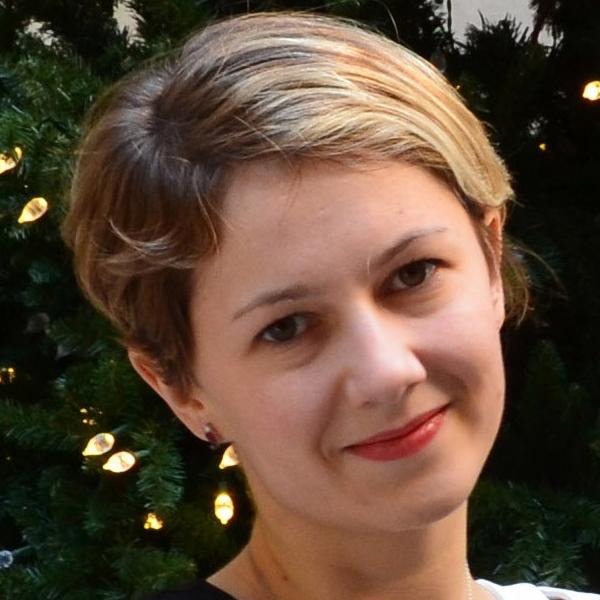
Olga Bogomolova earned a Bachelor in Business Administration, with concentration in Finance and minor in Economics, from Pace University in 2013; she is currently attending the same university to earn a Master’s degree in Computer Science. In the past Ms. Bogomolova has worked as an analyst in major investment banks and as an associate business developer for a technology startup. Over the past few years Ms. Bogomolova managed teams of various sizes and diverse backgrounds; in the process she has improved her ability to work under pressure and make well-calculated decisions. Currently Ms. Bogomolova holds a position of program coordinator and project manager at Pace University’s Seidenberg School of Computer Science and Information Systems. Her work experience includes organizing and managing programs such Pace STEM Camp and Seidenberg Summer Scholars Experience that focus on teaching Web Development, design thinking and innovation to high school students across United States. In this role she helped to design the teaching curriculum, identify learning outcomes as well as managed budgeting and promotional efforts. In her current position Ms. Bogomolova also assisted in redesigning the curriculum for CIS 101, a freshman class focused on familiarizing the student body with the current technologies. In addition to the responsibilities mentioned above Ms. Bogomolova is also a project manager for a number of Seidenberg Creative Labs projects. In this role she is responsible for client relations, budgeting and business development, among other tasks.
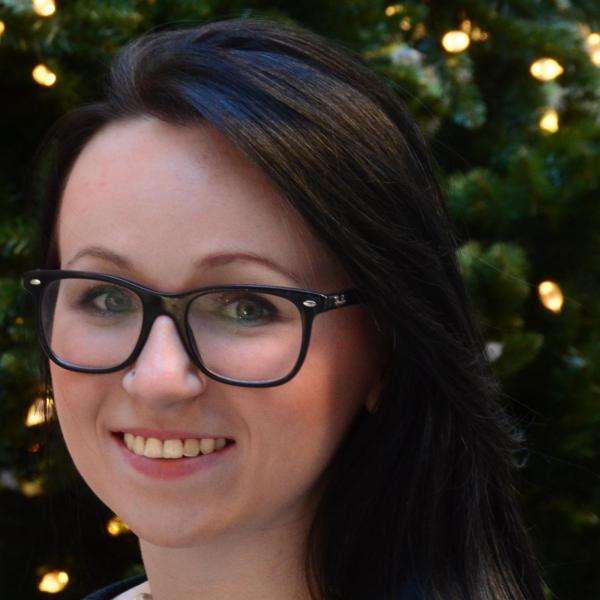
Julie Gauthier is a senior computer science major at the Seidenberg School of Computer Science and Information Systems. She has been the Executive Director at Seidenberg Creative Labs, a student-run web and mobile development agency. After gaining programming and project management skills here, Julie moved on to become a web developer for RentHackr, a start-up dedicating to simplifying the NYC apartment hunt. Julie is now at a final internship before the end of her undergraduate years at Dom & Tom. Embracing a love of web development and a passion for technology education, Julie has been teaching web design and development and Adobe Photoshop and Illustrator workshops and seminars to hundreds of people from all over the United States. Appreciating how important design is in software development, Julie also pursuing an art minor. Julie is also an active member of Kappa Delta sorority and an avid participant in Hackathons.
Crime Scan
Executive Summary
Crime Scan is a lifestyle app designed to provide accurate information about criminal reports in your area. Using information from the crime map statistics from nyc.gov, Safe Scan provides up to date crime statistics for your entire area as well as for your individual location. The app is designed with the busy city resident in mind. The app’s main feature is its responsive nature. Instead of just functioning as a mobile database as many crime scanning apps act as, Crime Scan is able to utilize the data is a responsive manner. If you find yourself in a location that makes you feel unsafe, you can utilize the main tabs scan function and the app will read the data and provide color-coded feedback. Green if it deems your area safe, yellow if it deems it questionable and red if deems your area unsafe. The app was designed with a quick, easy user experience in mind. Instead of having to sift through loads of information, the return is just a simple, striking color that your brain can easily decode.
The app has two main tabs. The first tab is the Crime Map tab, the second being the scan tab. The Crime Map tab has the main map separated with the data provided by nyc.gov, where you can examine the last few months of data. The scan tab is where you can both scan your surrounding area and input a destination, where the app can test how safe the route is. This app was designed with people who live in densely packed areas in mind.
Biography 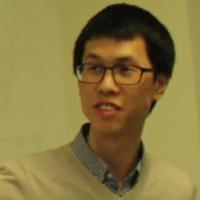
Wei Xia is a full time graduate student at Pace University Seidenberg School of Computer Science and Information Systems pursuing his Master Science degree in Computer Science. His undergraduate major is journalism and has nothing to do with the Internet. However, after one year's working in the Internet company in his country, he made a decision to change his career path to computer. That's why he came to states to get his master degree in Computer Science. In his opinion, Internet has already changed people's daily lives, especially smart phones. He wants to develop an iOS application before graduating. His career goal is to establish an Internet company and help more people to use the Internet and get benefits from the Internet.
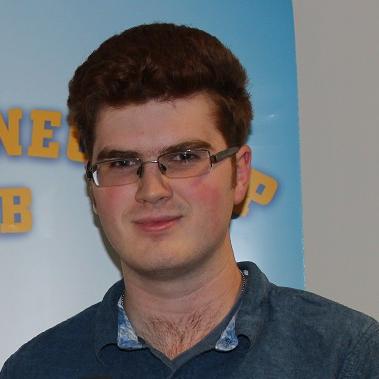 Shane Duda is a sophomore at Pace University currently completing an undergrad degree in Computer Science, Bachelor of Arts. Originally a Criminal Justice major, Shane changed his major to Computer Science after researching the surge in tech related jobs across all fields, especially law enforcement. Although he is interested in pursuing cyber security as a career path, Shane nevertheless finds the development process fascinating, and was drawn to the Entrepreneurship Lab’s Hackathon to experience an expedited development cycle firsthand.
Shane Duda is a sophomore at Pace University currently completing an undergrad degree in Computer Science, Bachelor of Arts. Originally a Criminal Justice major, Shane changed his major to Computer Science after researching the surge in tech related jobs across all fields, especially law enforcement. Although he is interested in pursuing cyber security as a career path, Shane nevertheless finds the development process fascinating, and was drawn to the Entrepreneurship Lab’s Hackathon to experience an expedited development cycle firsthand.
EaTcard
Executive Summary
The EaTcard application is the first ever loyalty card of its kind. It is specifically designed for university students to use on campus at their cafeteria. The EaTcard app allows students to “Earn and Track” rewards in their college or university’s cafeteria. There is no longer a need to carry physical meal plan cards and several punch cards, which are inconvenient, easily lost, and slow down the payment process. The EaTcard app’s purpose is to streamline the payment and rewards process at university dining halls.
The EaTcard application is completely card free, secure, and easy to use. The application is downloaded onto a smartphone or tablet and the student creates an account and password. Then, the online app generates a unique QR code which can be scanned as students pay for their meals. After a transaction is recorded, a digital receipt is generated and displayed in the app. The app then also deducts the transaction from the student’s account and clearly displays a remaining balance. As students use the application, it tracks what they have purchased to ensure they are getting the rewards offered. The EaTcard takes a $0.15 fee from each transaction using the application. The application also notifies students of their account balance after each transaction. EaTcard app simplifies the payment process which will make lines to pay at dining halls shorter and faster.
The target market would be foodservice providers that facilitate the dining experience on campuses. Two of the largest university foodservice providers in America are Sodexo Inc. and Compass Group North America. In 2013, Sodexo Inc. generated $23 billion in total revenues, with their North American division providing 39% of that revenue. Chartwells, a division of Compass Group North America, alone has 120 plus universities which rely on services for their dining halls. There is a demand for the EaTcard, because it will simplify the checkout process at university cafeterias and allow students to track their dining rewards and meal plan easily. The app will also provide foodservice companies with valuable information on what students are purchasing at each university. This will allow the foodservice companies to better facilitate their resources depending on the needs of the students.
Loyalty card programs are starting to be implemented more and more in universities across the country. Unlike its competition, EaTcard provides digital receipts and also allows you to check your balance while tracking and earning rewards on campus dining. Similar loyalty programs like the bellycard, are not made specifically for the needs of university students, and also do not provide digital receipts. University specific programs, like the Lobocard (of the University of New Mexico), are not available to be used universally by the large foodservice providers. They also don’t offer a way to track the student’s account balance and require a physical card. EaTcard app will be the solution to inefficient meal plan and loyalty card programs and will revolutionize the dining hall experience for university students.
Biography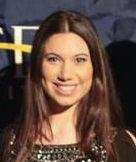
Alexa McKenna is a full time Pace University Student expected to graduate in May of 2017. She is in the Lubin School of Business studying to receive her BBA in Management- Entrepreneurship. After graduation, Alexa hopes to run her own business and “not work for anyone else”. She enjoys sharing ideas and talking business with other entrepreneurial-minded individuals. This is her first time participating in the Pace Pitch Contest.
Go! Go! Feed!
Executive Summary
‘Go! Go! Feed!’ is a free app designed for cooking and social networking, also has adequate business market. How to cook delicious dishes when you do not have enough kinds of food? How to develop friendships with others linked with food? How to let your life more colorful with changes in dishes? Let ‘Go! Go! Feed!’ tell you the secrets!
Features:
Feed!
This App provides various recipes based on different cooking levels and ingredients in your fridge.
Target Users:
Students
Offers simple recipes related to what students have in their fridge. Most students have no idea about cooking and just buy ingredients randomly, but these ingredients may be hard to mix together to cook a dish. Therefore, this app is committed to providing simple food with what they have in the fridge. Additionally, when they get accustomed to use this app, they are into cooking, which saves money and keeps healthy.
Office workers
Provides simple dishes to save time in weekdays because this white collar group does not have enough time to cook, therefore this App lists simple but healthy dishes to meet their demands.Enjoy food in weekends. During the weekend, there is a huge market for office workers to get together and enjoy food.
Housewives
Improve cooking skills. This App offers specific picture in accordance with each step in certain recipes so that housewives can know which step she needs to enhance. Try new dishes to stimulate appetites. Family members may feel tired on their daily food without changes, therefore it is a good chance for housewives to try fresh dishes to attract their family members. It provides housewives more convenience during cooking. They don’t have to buy thick and expensive cooking book. The app is free, vivid and portable.
Go! Go!
This App is a platform for different groups to organize events to network with each other and spread cooking knowledge.
Events held by different Groups:
Users’ Group
Non-merchant users post events and develop friendships.
Merchant users provide activities to attract their target customers.For example, cooking center posts details about training classes.
App Marketing Group
Post to spread cooking knowledge. For instance, App administration provides posts related to Traditional Chinese Medicine Health Cultivation. These posts may only simple spread easy professional knowledge, or may apply some options for users to actually experience it.
Business Market:
This App co-operates with different companies to make sure it offers options for users to experience.For example, when a non-merchant user hosts a event without enough ingredients, then the host can get information about where and what to buy or order online from its co-operation, such as Blue Apron. You can even find a chef from partners, such as Kitchensurfing.
For another example, app marketing group host theme parties, such as organic food party. After communicating with organic companies, this app marketing department can get organic food for free because this activity can advertise this company. Meanwhile, app marketing department will charge all candidates.
Biographies
Bo Liu is currently a first year master student at Pace University majoring in Public 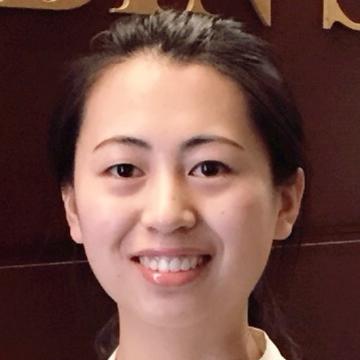 Accounting. She will graduate in December 2016. She attends many professional events to network with professionals and enrich her understanding of Accounting. She is a candidate of ACCA, and is preparing for AICPA. In addition, she spends a lot of time enhancing public presentation skills. She likes to communicate with others with fluent English and Mandarin. In her free time, she contributes to community service to help others. She is a member of Tax 1on1 to assists others to report tax. She possesses professional skills in Traditional Chinese Painting
Accounting. She will graduate in December 2016. She attends many professional events to network with professionals and enrich her understanding of Accounting. She is a candidate of ACCA, and is preparing for AICPA. In addition, she spends a lot of time enhancing public presentation skills. She likes to communicate with others with fluent English and Mandarin. In her free time, she contributes to community service to help others. She is a member of Tax 1on1 to assists others to report tax. She possesses professional skills in Traditional Chinese Painting
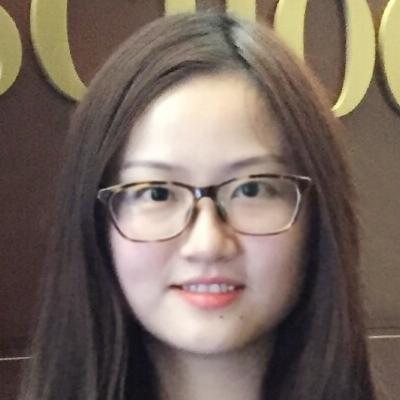 Ni Mei is currently a first year master student at Pace University majoring in Public Accounting. After accomplishing her Bachelor’s Degree in China, She came to America to pursue further study. She hopes to gain her Master’s degree in 2016. She is fluent in both Chinese (Mandarin) and English. Throughout her campus experience, she has participated in a variety of activities to build up networking skills such as community service and professional events held by Beta Alpha Psi and Ascend. Additionally, she is now in the E-board assistant program, which involves her in holding several professional and non-professional events including Goldman Sachs workshop. As a national member of the Toastmaster Club, she has taken different roles such as table topic master, timer and speaker in the Toastmaster meeting to improve her impromptu speech, public speaking, and communication skills. Not only is she active in business-related activities, but she also attended Pace Mobile App Design Contest and won the third place. With continuous effort in mind, she believes that nothing is impossible and what students can benefit more is from experiences rather than textbooks.
Ni Mei is currently a first year master student at Pace University majoring in Public Accounting. After accomplishing her Bachelor’s Degree in China, She came to America to pursue further study. She hopes to gain her Master’s degree in 2016. She is fluent in both Chinese (Mandarin) and English. Throughout her campus experience, she has participated in a variety of activities to build up networking skills such as community service and professional events held by Beta Alpha Psi and Ascend. Additionally, she is now in the E-board assistant program, which involves her in holding several professional and non-professional events including Goldman Sachs workshop. As a national member of the Toastmaster Club, she has taken different roles such as table topic master, timer and speaker in the Toastmaster meeting to improve her impromptu speech, public speaking, and communication skills. Not only is she active in business-related activities, but she also attended Pace Mobile App Design Contest and won the third place. With continuous effort in mind, she believes that nothing is impossible and what students can benefit more is from experiences rather than textbooks.
 Sukun Li is a full-time graduate student in Seidenberg School of Computer Science and Information Systems at Pace University majoring in Computer Science, and put her degree towards mobile application computing. She will graduate in Summer 2016. Since her childhood, Ms. Li has been interested with interactive digital media technology and get a Excellent Graduate Design Award when she obtained her Bachelor of Engineering in Digital Media Technology. She worked for the Beijing Digital Museum before she enrolled in the Pace's masters program. Currently, she is a team member of Seidenberg Creative Lab, and a web-engineer of Jeturtle group at New York City.
Sukun Li is a full-time graduate student in Seidenberg School of Computer Science and Information Systems at Pace University majoring in Computer Science, and put her degree towards mobile application computing. She will graduate in Summer 2016. Since her childhood, Ms. Li has been interested with interactive digital media technology and get a Excellent Graduate Design Award when she obtained her Bachelor of Engineering in Digital Media Technology. She worked for the Beijing Digital Museum before she enrolled in the Pace's masters program. Currently, she is a team member of Seidenberg Creative Lab, and a web-engineer of Jeturtle group at New York City.
Independent Artist Charitable Foundation
Executive Summary
Problem
A decline in funding for the arts means that many independent artist can no longer pursue their careers. Their
development is now being paid out of their own pockets, forcing an unsustainable situation. Government funding has diminished and other donations/support has declined or moved to larger scale operations. Artists, in order to survive in their chosen field are forced to become a larger entity than needed in order to be able to create. Often having to register as charities with boards of directors, impeding and slowing the ability to create on a small sustainable scale, which in turn raises costs and limits access for the majority of society to consume arts or remain connected to them. There is also a problem when an independent artist does manage to solicit a large donation but can only accept it when offering a tax credit. They often will not receive the full amount if any money at all.
Solution
IACF will establish itself as an umbrella charity to represent independent artist (operating as notforprofit)
to seek large donations on their behalf with the ability to offer tax credits. This is the only way that small scale artist could benefit from large corporate donations, and the corporations would benefit from a larger, more diverse audience to be connected with in this manner for the first time (power in numbers). At the same time this would provide the opportunity for sustainable earnings for artists and affordable access to the consumer. This structure allows artists to keep their business structures smaller and much more efficient, reducing many overhead costs while creating greater ability for more product development. IACF would also be developed to offer tax credits for independent donations to be passed directly to independent artist and would also be able to accept general donations from the public to be redistributed to many artists. This structure allows individuals in support of arts to be able to allocate portions of their tax money as they see fit while reducing their taxable income. IACF would also develop programs to aid artists in their business management.
Target Market
There are two current markets that need to be approached to create the right momentum for this charity. First there would be the development of a portfolio of artist seeking to create, and in need of funding. The artist considered would be a diverse group but they would all be required to operate as a not-for-profit and be able to clearly describe their project as well as the budget associated with it. The second is those making donations. Primarily donations would be sought from large corporations seeking to donate in order to satisfy their business plan. There would also be on a smaller scale an awareness campaign to the public on social media, possibly developing some financial support. Initially there would be an aim to aid local New York artists with companies interested in reaching a broad middle class audience but this would only be in the initial development of the foundation.
Competition
Currently there is little direct competition for the foundation as it would exist, but there is competition in the sense of how people and corporations would want to donate. There will be need to develop a clear marketing plan to demonstrate all benefits offered by the foundation to the donors. Competition in many ways would be other charitable artist that operate on a large scale and IACF would have to clearly show that supporting many artist on a small scale as oppose to one a large scale is to everyone's benefit. There is also slight competition with Fractured Atlas , a charitable organization that allows artist to accept donations through their organization but does not raise funds for them. IACF would have the competitive advantage.
Why Pitch
At this point the IACF is in need of financial aid in order to get itself into a position to launch. Hiring lawyers to ensure that everything will be structured in a manner to work within the constructs of a charity, registering the business, as well aid in the marketing development will require funding. Time has been donated and will continue to be donated to create the foundation, but the current ambition is to avoid out of pocket cost for necessary fees while continuing to create the structure for a sustainable charity, and a new way to fund artists that will empower them to work with less financial strain.
Biography
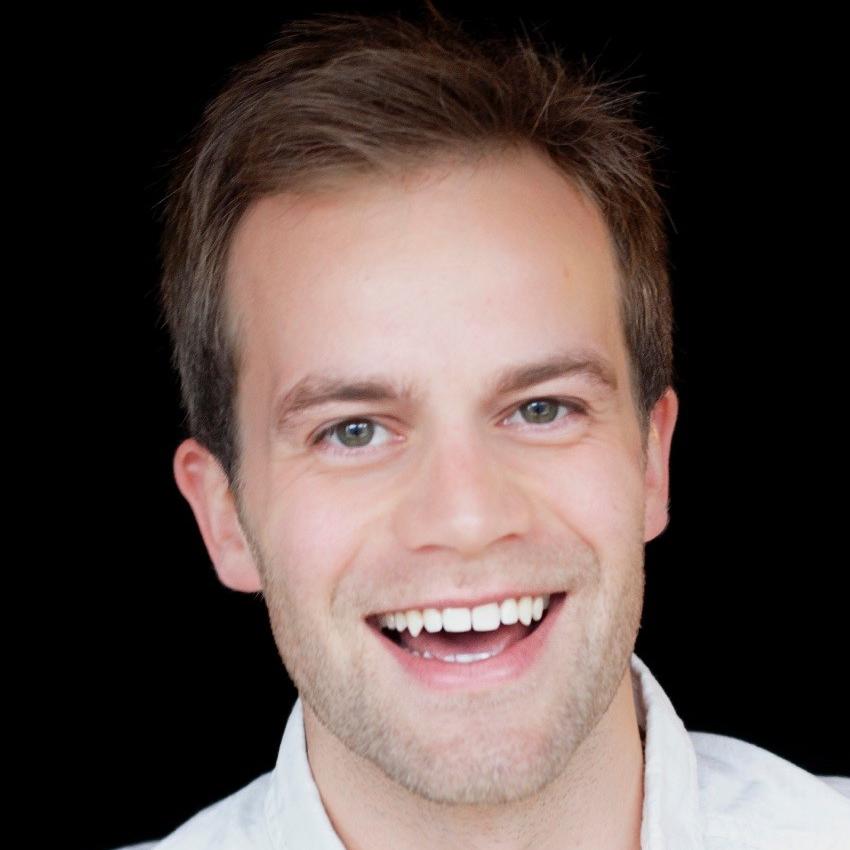 JohnRiley O'Handley is currently studying at Pace University with the Actors Studio Drama School, developing his career as an actor, producer, and artistic director/business director. A graduate of Dalhousie University with a BA in theatre and a minor in business JohnRiley has found himself striking a balance of acting and artist development. JohnRiley has cofounded WORKhouse Theatre as the artistic director and business director. With WORKhouse he has developed and overseen many productions. JohnRiley spends a large amount of time with WORKhouse's artist development unit, curating and organizing WORKplay events that present artists works in progress and provide critical development and feedback. Outside of producing, JohnRiley has been continuing his acting on stage and in independent film and television. JohnRiley was pleased to of recently been a part ofthe Summerworks Leadership Intensive Program and is using everything he has learnt to start work on developing a charitable organization dedicated to increasing the development and funding of independent artist. He hopes that with a new structure to support artist that there will be a new life to art, and hopefully a new way of supporting art that is sustainable and works in today’s economy.
JohnRiley O'Handley is currently studying at Pace University with the Actors Studio Drama School, developing his career as an actor, producer, and artistic director/business director. A graduate of Dalhousie University with a BA in theatre and a minor in business JohnRiley has found himself striking a balance of acting and artist development. JohnRiley has cofounded WORKhouse Theatre as the artistic director and business director. With WORKhouse he has developed and overseen many productions. JohnRiley spends a large amount of time with WORKhouse's artist development unit, curating and organizing WORKplay events that present artists works in progress and provide critical development and feedback. Outside of producing, JohnRiley has been continuing his acting on stage and in independent film and television. JohnRiley was pleased to of recently been a part ofthe Summerworks Leadership Intensive Program and is using everything he has learnt to start work on developing a charitable organization dedicated to increasing the development and funding of independent artist. He hopes that with a new structure to support artist that there will be a new life to art, and hopefully a new way of supporting art that is sustainable and works in today’s economy.
My People App
Executive Summary
The App:
MyPeople app was created to make your daily life easier. Tired of spending hours organizing your schedule? MyPeople App will do it for you. Connect your calendar application to our app, create a new task, add a description to it (deadline, effort and priority), and we will take care of the rest.
The user will not have to think of how to organize its time; the app will do it for him according to several criteria.
Criteria analyzed:
- Existing tasks: Everything already scheduled is considered to avoid conflicts between tasks and, if possible, give some rest to the user, in order to make their lives more confortable.
- User profile: the user can say their preferences about how their lives must be. For example, he or she might want to define that they don’t want to have any tasks scheduled for weekends, or special dates such as birthdays.
- New task: When adding a task, in the description of it, the user will be able to add a deadline, the level of priority (high, medium, or low), and the effort needed to complete this particular task (number of hours).
- Others: when creating a task, the user can put additional information in order to improve the scheduling decisions. For example, he or she can add the location where the task is going to be made, and our app is going to avoid scheduling it too closely to other tasks scheduled in different places.
Target Market and Goal:
Our main targets are University students and people with an active life style.
They need to be time efficient and do not have time to plan it.
We believe that MyPeople App will organize their calendar efficiently and avoid waist of time.
Next Steps:
In this first version, the app already schedules the task, without asking the user to confirm. The next think to add to the app is the possibility of the user to choose between possibilities that the app gives before the task is scheduled.
Further additions are integrating MyPeople App with Google Now, to make the scheduling more personalized and accurate; likewise, add voice services and task suggestions.
Biographies
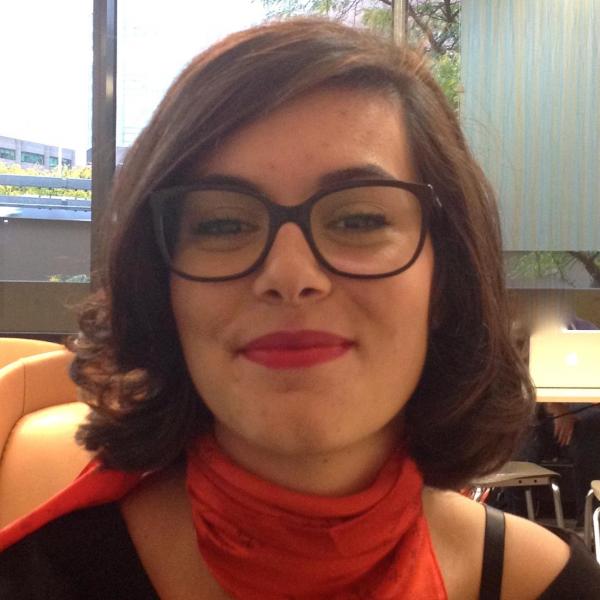 Cyrielle Eutrope transferred from French University CEFAM to complete her senior year at Pace University. She is a full-time student with a Management major and Entrepreneurship concentration as well as a minor in Marketing. She is expected to graduate from Pace University in May 2015. While at University, Cyrielle was in charge of several associations. During her sophomore year she became the head of the student council as well as the head of event coordination. She completed several internships and started to shape her resume. Her most significant work experience was for Dentsu Aegis Media, at the International department where she handled clients such as Narciso Rodriguez, Issey Myiake, Jean Paul Gaultier or even Elie Saab. Cyrielle grew up surrounded by entrepreneurs and leadership as always been part of my life. She was encouraged to try new things and not be afraid of failure.
Cyrielle Eutrope transferred from French University CEFAM to complete her senior year at Pace University. She is a full-time student with a Management major and Entrepreneurship concentration as well as a minor in Marketing. She is expected to graduate from Pace University in May 2015. While at University, Cyrielle was in charge of several associations. During her sophomore year she became the head of the student council as well as the head of event coordination. She completed several internships and started to shape her resume. Her most significant work experience was for Dentsu Aegis Media, at the International department where she handled clients such as Narciso Rodriguez, Issey Myiake, Jean Paul Gaultier or even Elie Saab. Cyrielle grew up surrounded by entrepreneurs and leadership as always been part of my life. She was encouraged to try new things and not be afraid of failure.
 I am Mariana Gomes da Motta Macedo. I am a Exchange Student from Brazil. My major is Computer Engineering. I will graduate in Computer Engineering in 2016. My goal in Pace University is to learn extra courses and participate in extra activities. In Pace University, I have the opportunity to share experiences with several professionals. In addition, my time at Pace is improving my Web and Mobile Development knowledge. Moreover, I have studied several topics of the Computacional World. My passion is research because I like learning new things and solving new challenges. Further, my goal is to add new experiences like The Pace Pitch Contest to help me mature professionally.
I am Mariana Gomes da Motta Macedo. I am a Exchange Student from Brazil. My major is Computer Engineering. I will graduate in Computer Engineering in 2016. My goal in Pace University is to learn extra courses and participate in extra activities. In Pace University, I have the opportunity to share experiences with several professionals. In addition, my time at Pace is improving my Web and Mobile Development knowledge. Moreover, I have studied several topics of the Computacional World. My passion is research because I like learning new things and solving new challenges. Further, my goal is to add new experiences like The Pace Pitch Contest to help me mature professionally.
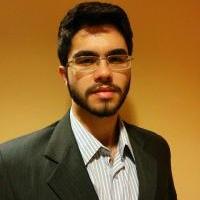 Luiz Henrique is a Brazilian student currently enrolled as a Junior in Computer Science at Pace University. He is participating in a special program sponsored by the Brazilian government that sends students to a foreign country to complete a part of their studies. Since his childhood, Luiz has always been very curious and interested in learning new things. This curiosity instigated a passion for engineering, computers, and entrepreneurship. He aims to create business solutions in these areas to make people’s life easier through automation and technology. His biggest inspirations are Steve Jobs, Neil deGrasse Tyson, and Elon Musk, a mix of personalities that inspire his passion in engineering and entrepreneurship.
Luiz Henrique is a Brazilian student currently enrolled as a Junior in Computer Science at Pace University. He is participating in a special program sponsored by the Brazilian government that sends students to a foreign country to complete a part of their studies. Since his childhood, Luiz has always been very curious and interested in learning new things. This curiosity instigated a passion for engineering, computers, and entrepreneurship. He aims to create business solutions in these areas to make people’s life easier through automation and technology. His biggest inspirations are Steve Jobs, Neil deGrasse Tyson, and Elon Musk, a mix of personalities that inspire his passion in engineering and entrepreneurship.
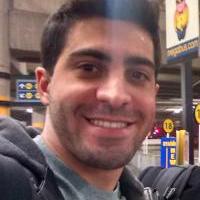 My name is Everton Abreu Correa. I'm a 27 years old Brazilian studying Bachelors in Computer Science . I started my studies in Brazil at Unisinos University (Unisinos stands for University of Vale do Rio dos Sinos) in August of 2009. In Brazil I worked for 3 years at SAP Labs Latin America as a Software Engineer. I came to New York in June of 2014 to study at Pace as an exchange student. I'm a recipient of a fully funded scholarship sponsored by the Brazilian Government through the Brazil Scientific Mobility Program. I'm returning to Brazil in August 2016 and I expect to graduate by the end of 2016.
My name is Everton Abreu Correa. I'm a 27 years old Brazilian studying Bachelors in Computer Science . I started my studies in Brazil at Unisinos University (Unisinos stands for University of Vale do Rio dos Sinos) in August of 2009. In Brazil I worked for 3 years at SAP Labs Latin America as a Software Engineer. I came to New York in June of 2014 to study at Pace as an exchange student. I'm a recipient of a fully funded scholarship sponsored by the Brazilian Government through the Brazil Scientific Mobility Program. I'm returning to Brazil in August 2016 and I expect to graduate by the end of 2016.
Neta
Executive Summary
Belongingness is a fundamental human emotional need, and people readily form relationships or connections with others without forcing to do so. This creates a huge demand for social networking. Today, people, especially college students and professionals generally seek ways to expand their social connection either through online social network platforms or through traditional offline communication. Online social network platforms such as Facebook, twitter, Tumblr, or Meetups etc., which help people accumulate friend’s connections up to hundreds or thousands in a short period of time, are suspicious in friendship quality. For instance, among the average of 130 Facebook friends, people will only interact with 3 or 4 of them. On the other hand, traditional social networking such as by referral, or face-to-face communication in any occasion does provide a higher quality relationship, but the quantity is limited. Our mobile application, Neta, helps offsetting the shorts sides of friendships or connections that are formed through solely online or offline social network channel.
Neta, is a social network platform that provides a unique navigation based networking function, which helps people who are under similar geographic locations immediately group together from a specific event or based on common interests or similarities. Neta users can either create a Neta group (air group) that is bonded with a specific location point or range, or detect and join any Neta group that matches with their current location points or ranges. Once a Neta group is created, it becomes an independent small virtual platform that members of the group will be able to chat with each other no matter where they are. This way, Neta acts as a contact book that enables everyone to collect contact information of different kinds of people they encounter under different locations.
The initial target users of Neta are mostly college students, which we believe, are our most loyal, potential and important users at the beginning stage. Specifically, in a typical university of United States, students rarely have the chance to interact with most of their classmates until they start talking to someone particularly since people just come to class and left right after the class. In this aspect, students are hard to make friends connections or enhance networks from their various classes. However, with Neta, students in the same class can be gathered together quickly in a group based on their location ranges and communicate effectively and easily through Neta’s online platform. Neta works in a flow from offline intersections to online communities and then back to offline interactions. That is to say, all of the online Neta connections or groups are bonded with some sort of offline intersections, (such as people from the same class) and thus users can easily migrate to offline communication modalities from the established online communities later. More importantly, the possibility of the members under the same Neta group that have had any physical contact before or may have any physical contact in the future is maximized. Therefore, Neta balances the quality and quantity of social networking, enhances network efficiency, solves communication problems and encourages more social networking activities.
Biographies
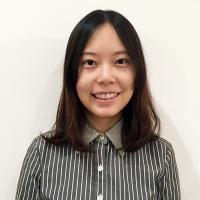 Sijia Pang, is from Chengdu, China and attended Pace University, New York, where she received her BBA in Finance with a Magna cum laude honor in May 2014. She is now a full time first year graduate student and is pursuing a MS degree in Financial Management at Lubin school of business in Pace University. She is 22 years old. During her years at Pace University, she demonstrated her leadership skill through joining business clubs such as Ascend and being an executive board member of Graduate Finance Club. Besides school, she also gained a lot of internship experiences in the financial areas in companies such as AXA and Northwestern Mutual, and is currently working on her brand new project Neta as a co-founder of NetAround LLC.
Sijia Pang, is from Chengdu, China and attended Pace University, New York, where she received her BBA in Finance with a Magna cum laude honor in May 2014. She is now a full time first year graduate student and is pursuing a MS degree in Financial Management at Lubin school of business in Pace University. She is 22 years old. During her years at Pace University, she demonstrated her leadership skill through joining business clubs such as Ascend and being an executive board member of Graduate Finance Club. Besides school, she also gained a lot of internship experiences in the financial areas in companies such as AXA and Northwestern Mutual, and is currently working on her brand new project Neta as a co-founder of NetAround LLC.
 Yiqiu Gao, is a current part-time MS Financial Management Student at Lubin School of Business, and expected to graduate in May 2017. She completed her BBA Finance degree at Pace University, and graduated as Magna cum laude honor in May 2014. While attending Pace undergraduate school, she was the Treasurer of the National Society of Leadership and Success, and was an intern at Cape Securities, Inc. She also owned and operated a tea shop which was located in Chendu, China, during her first two years of college. Yiqiu Gao is also the founder of NetAround LLC and currently focuses on her start-up project Neta.
Yiqiu Gao, is a current part-time MS Financial Management Student at Lubin School of Business, and expected to graduate in May 2017. She completed her BBA Finance degree at Pace University, and graduated as Magna cum laude honor in May 2014. While attending Pace undergraduate school, she was the Treasurer of the National Society of Leadership and Success, and was an intern at Cape Securities, Inc. She also owned and operated a tea shop which was located in Chendu, China, during her first two years of college. Yiqiu Gao is also the founder of NetAround LLC and currently focuses on her start-up project Neta.
RamPak
Executive Summary
RamPak creates clean, disposable liners to existing hydration sources allowing safe drinking for soldiers or athletes on the go. Our customers are primarily military members who must endure harsh environments with limited resources for long periods at a time. In these environments, hydration sources become difficult to keep clean and can ultimately hinder performance as a result of dehydration or illness. RamPak provides a simple solution to maintaining a clean source of water during such times: a thin, plastic liner that acts as a barrier between the already unclean hydration source and the H2O.
How It Works
Nearly every member of the U.S. Armed Forces is issued a personal hydration back pack, multiple canteens, and often a stainless steel canteen cup. Our market research has shown 9 out of 10 service members report difficulty keeping these personal hydration sources clean during combat, training, and even daily operations. RamPak effectively solves this problem through its unique, patent-pending cap and corresponding disposable liner system. This design requires no difficult installation, alteration, or change to the physical appearance of an existing hydration source. Instead, its simple process allows users to “pop-in” a “RamPak” liner to their existing hydration source, fill it with water, and seal it when complete. When the liner itself becomes unclean, it can be easily extracted and thrown-out or recycled, and replaced with a new “RamPak” liner. The liners arrive compressed for ultra-portability, are BPA free, made in the USA, and come in a variety of sizes to fit any sized hydration back pack, canteen or water container.
Target Market
As of February 2015, there are approximately 2.5 million members serving in the U.S. Armed Forces. RamPak seeks to capture this large customer base, and will therefore tailor its business and marketing for this demographic. In turn, this will establish a healthy, consistent revenue base to ensure stability of the business. In addition, the athletic industry in the civilian market will be successively pursued after large progress in the military market has been achieved.
Competitive Advantage
While there are many major competitors offering hydration sources to members of the military as well as the civilian market, there is currently no business offering a disposable liner system that works with these existing products. RamPak will be the first to offer this solution to the problem of a maintaining a clean water source without requiring its user to conduct any actual cleaning. This will initially provide RamPak a competitive edge, and its unique design will maintain its originality and position in the market place as the premier choice for a disposable liner system to existing hydration sources.
Biographies
William James is currently a full-time graduate student at Pace University, studying Public Administration through Dyson College. He is originally from Laguna Beach, CA, and now lives in Manhattan on the Upper East Side. Robin holds a Bachelor of Arts from Pennsylvania State University in Political Science, class of 2014.Prior to starting his graduate studies at Pace, William James served 5 years with the U.S. Army Active Duty from 2009 to 2014, with one deployment to Iraq in 2011. William James now serves as a U.S. Army Reservist based out of Fort Dix, NJ. Aside from his military service and studies, William's underlying passion has always been entrepreneurship. He currently studies entrepreneurship via the Pace Veterans Entrepreneurship Boot Camp, which has greatly assisted him with the development of RamPak. William ultimately aspires to become a full-time serial entrepreneur responsible for creating America’s next best companies.
Fredrick Voltaire is a grad student in the Dyson College of Arts and Sciences at Pace University and is working on his MA in Mental Health Counseling. Upon finishing his undergrad at Western New England University with a BA in Psychology, he participated in a series of clubs and activities: including Army ROTC and volunteer work in group homes.After graduation, Fredrick joined the Army National Guard and served active duty time with the 1-13th Infantry Regiment at Fort Jackson, South Carolina. Currently he is serving as a reservist with the 42nd Infantry Division of the New York Army National Guard. Fredrick's professional experience includes working as a therapeutic associate at Westchester Medical Centers Behavioral Health Center; he is also about to start an internship at New York Presbyterians Payne Whitney Hospital. With the support, education and assistance from the Pace Entrepreneurship Lab staff, Robert hopes that the skills he is learning will not only benefit him with becoming an entrepreneur; but allow others to gain prosperity and inspiration to follow in his footsteps
Previous Pitch Contests
|
Tenth Annual Pace Pitch Contest (April 17th, 2014) |
![[Pitch Contest Brochure]](/lubin/sites/pace.edu.lubin/files/WFO/Images/pitch/2015/eleventhPitchContest.png) Click to download the full Official Program for the Eleventh Annual Pace Pitch Contest (PDF). |
For additional information, please contact
Bruce Bachenheimer,
Clinical Professor of Management and Director, The Entrepreneurship Lab
Tel: (212) 618-6663
Fax: (212) 618-6664
E-mail: bbachenheimer@pace.edu
Web: webpage.pace.edu/bbachenheimer
Address: Pace University
Lubin School of Business
Department of Management, Room 342
163 William Street
New York, NY 10038
Nikhil Kalyankar,
Associate Director, The Entrepreneurship Lab
Tel: (212) 618-6667
E-mail: nkalyankar@pace.edu
Address: Pace University
The Entrepreneurship Lab
163 William Street, 3rd Floor
New York, NY 10038
![[Pace Pitch Contest]](http://appsrv.pace.edu/Lubin/images/pitchcontest/PacePitchContest.jpg)



![[Join our mailing list]](/lubin/sites/pace.edu.lubin/files/WFO/Images/entrepreneurship/JoinOurMailingList.jpg)
 Visit us on Facebook
Visit us on Facebook



